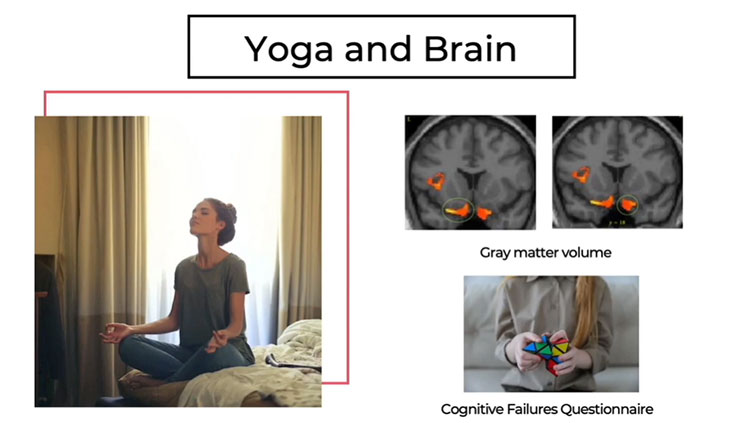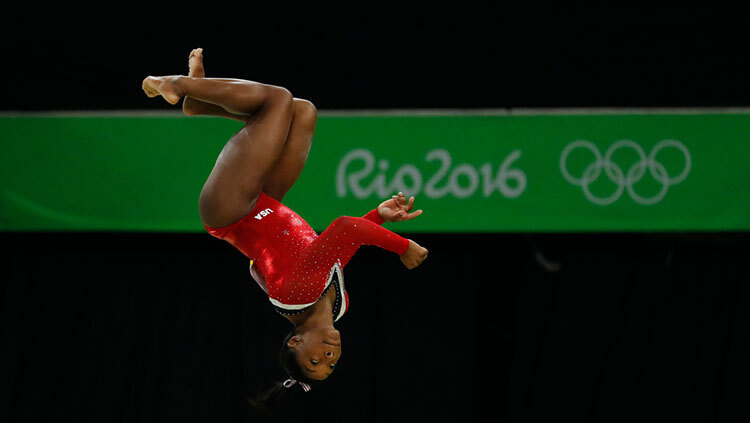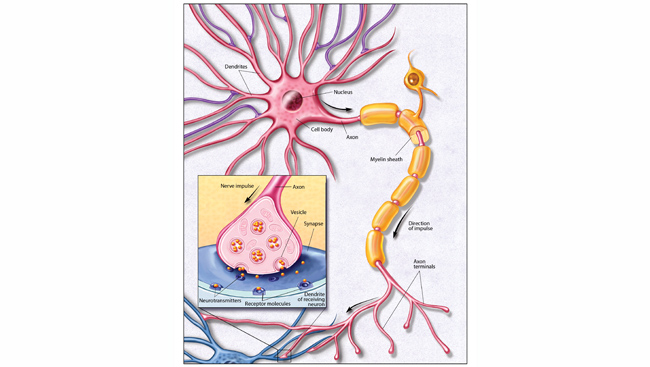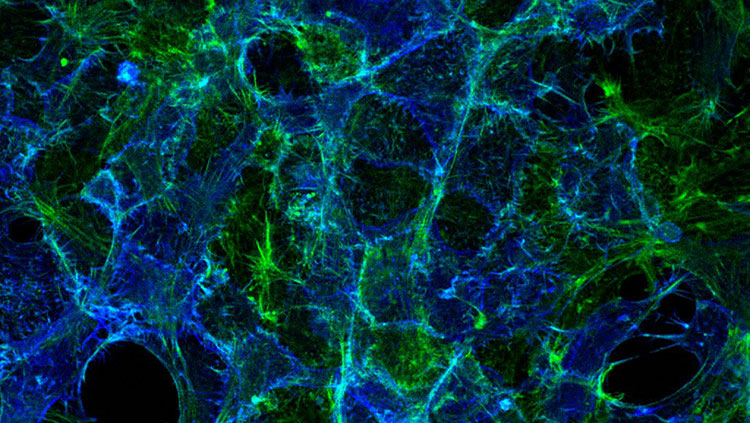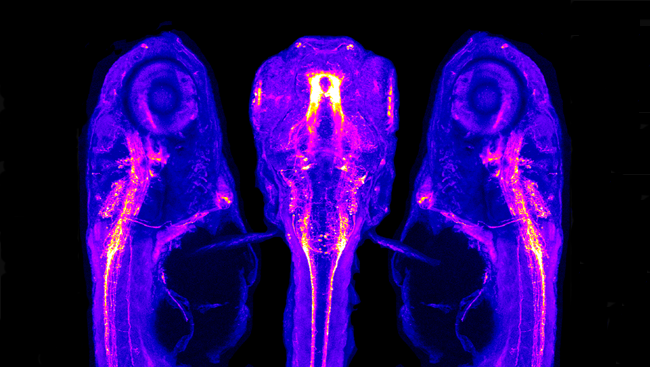
Courtesy, with permission: Lambert, et al. The Journal of Neuroscience 2012.
Neurons in the brain and spinal cord collaborate to control complex movements, such as walking or swimming. The development of these repetitive movements is observable in more primitive creatures with backbones. Scientists study simple animals to learn when during development these abilities arise.
The image shows the top and side views of a five-day-old zebrafish, a small fish important in neuroscience research. The animal’s brain and spinal cord are dyed with a fluorescent protein to define certain parts: regions with neurons that produce dopamine, a neurotransmitter that helps control movement.
Shortly after birth, zebrafish abruptly become expert swimmers, adopting the swimming patterns of their more mature kin. Scientists studied the swimming movements of zebrafish and recorded nerve activity in the spinal cord to better understand the developmental switch from immature to mature swimming.
CONTENT PROVIDED BY
BrainFacts/SfN


